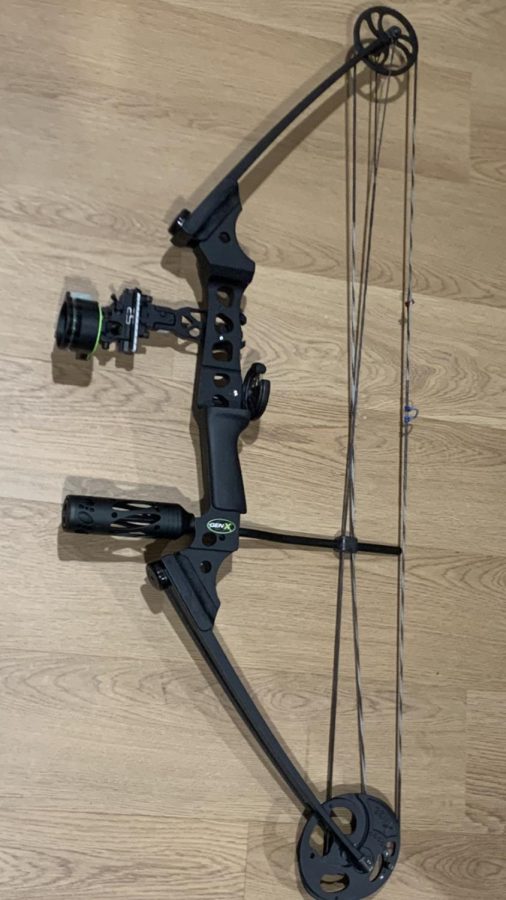Archery: Recurve vs Compound
This picture of my compound bow shows a sight, a nocking point, a rest, and a stabilizer
In archery, there is a wide variety of bows. It can be difficult for beginning archers to decide which bow is right for them. There are four main types of bows: longbow, compound, recurve, and crossbow. Recurve and compound are the most common bow types, and there are many brands that sell each type. Two of the most popular bow brands would be Bear Archery and Martin Archery, both of which sell recurve and compound bows.
When comparing recurve and compound bows, you can instantly see that they are dramatically different. While the recurve bow is long and simple, the compound bow is short and cluttered. While recurve archer relies solely on their own strength and precision, compound archers have more tools on their bows to assist them.
One of the most important differences between these bows is that a compound bow has a let-off, which means that the archer isn’t pulling the entire draw weight of the bow. A compound bow uses its wheel system to compound the force of the draw. After an archer draws the string 3/4 of the way back, the wheel system will assist in holding the weight. The let-off allows an archer more time to aim while at full draw but still retains the same force it would have without the let-off.
A recurve bow doesn’t have a let-off, so the archer has to pull and hold the entire draw weight for however long it takes them to fire. Since a recurve archer has to hold the whole weight, it can be distracting when they try to replicate their previous shot. The let-off makes a compound bow easier to be precise with.
Compound bows have a sight you will look through to aim. Within these sights, there are different pins for different distances, which means things can get a little complicated. Every time you move back five feet from the target, you will move down a pin. Each pin has to be “sighted in,” which means adjusted so that arrows hit in the same area every time. If the bow is sighted wrong, it can cause problems when an archer is shooting.
From my experience with shooting a compound bow, I know attempting to differentiate pin from pin when they are the same color can be a nightmare, which is one of the few reasons I now have a compound bow with only one pin. When there is only one pin, it’ll be adjusted accordingly as the archer moves away from the target. Though if a compound bow was going to be used specifically for hunting, it would be better to have multiple pins instead of only one. Since recurve bows don’t have a sight on the bow, an archer has to look down the arrow to aim, which could cause them to miss their target.
Another big difference between these bows would be price. A compound bow costs far more than a recurve bow. Since a compound bow has so many more gadgets and pieces, it takes more time and money to assemble. These parts also need to be maintained, so the proper equipment would need to be purchased, which brings the price even higher. While the equipment is great to have, it isn’t essential.
Unfortunately in archery, there isn’t a one size fits all bow. Which bow is best for a particular person has many factors, which rely specifically on that person. A person needs to consider their own strength, budget, and the amount of time they would be willing to devote to archery before purchasing a bow.
Thanks for reading The Falconer. We're happy to provide you with award-winning student journalism since 1963, free from bias, conflicts of interest, and paywalls. We're able to continue with the generous support of our local community. If you're able, please consider making a donation. Any amount is incredibly helpful and allows us to pursue new and exciting opportunities.
Hey! My name is Madison Fishback and I am a freshman. Some of my hobbies include reading, writing short stories with friends, and photography. Outside...






